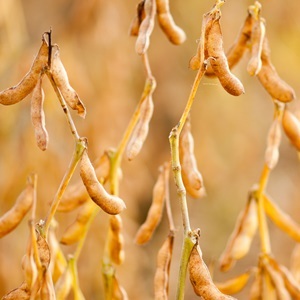
Recent exposure
After milk, soy allergy is regarded as the second most common food allergy in the Western world. For centuries people in countries in the West did not cultivate or eat soy beans, but since the 1950s there has been a dramatic rise in the use of soya or soy bean derivatives in processed foods and other products such as medication and supplements – including most types of commercially baked bread. With the discovery that by adding soy protein to bread, the high glycaemic index (GI) can be reduced to an intermediate or even a low GI, more breads now contain substantial quantities of soybean derivatives.
It is possible that Westerners have not yet adapted to eating this type of protein and that more people in Europe, the Americas and Africa are reacting badly to this relatively “new” protein. In general these symptoms appear to be digestive, including bloating, flatulence, nausea and perhaps even irritable bowel disease.
We are surrounded!
In the same way that practically every processed food contains some derivative of wheat or milk, most of these foods also list soy, soya, soybean, textured vegetable protein, soy flour, soybean isolate, lecithin or vitamin E in their ingredient list and bear the warning “Soy (allergen)”.
Let’s look at a typical example: I have often wondered why it is necessary to add soy in some or other form to unflavoured or original instant oats. A quick perusal of the label of a popular brand shows that while the ingredient list only mentions “rolled oat flakes, oat bran, salt, flavouring, vitamins and electrolytic iron”, the allergens list includes “gluten, milk, soya, wheat”.
I am amazed! Where do the wheat, milk and soya come from? Or is the manufacturer merely covering his bases by listing all the major allergens in case there might be some cross-contamination in the factory? In this case, listing soya may be justified if the vitamins include vitamin E, which is made from soya.
The problem is of course that anyone with a soya allergy will take one look at this label and probably decide to skip original flavour instant oats – a deprivation indeed during this cold weather, and a disadvantage to patients who would like to reduce their cholesterol levels.
Why so much soya?
Why on earth has this Eastern legume been introduced into practically every processed food that we eat nowadays? Initially soy beans were relatively expensive and grown exclusively for animal feeds. However, as Western farmers realised how easy it is to grow soy, and as food manufacturers discovered that soybean is a cheap protein substitute with all the right characteristics – inexpensive, low in fat, cholesterol free, high in plant protein, high in dietary fibre, water-absorbent, flavour-enhancing – it was added to more and more foods.
Please don’t misunderstand what I am trying to say. Proteins and products derived from soybeans are excellent foods which form the staple diet for millions, if not billions of people in the East. They are also the mainstay of many vegetarian lifestyles and are prized for their GI-lowering and protein-enhancing properties, without adding cholesterol or animal fat to the diet. However, if an individual is allergic to soybeans and all its many derivatives, then having soybean added to most modern foods seriously restricts their food choices and can make life a misery.
Can we avoid soy?
Mahan and her co-authors (2012) emphasise that it is vital to read all food labels diligently and when in doubt to avoid the food or beverage in question. While we do not have quite as many foods and/or additives as listed in Krause’s Food & the Nutrition Care Process in South Africa, the following local ingredients/foods contain soya:
Foods and Ingredients that are made from soya:
Soy-based baby formulas, soy seed, fermented soybean paste, fermented soybeans, lecithin made from soy*, miso, soy nuts, soy protein (concentrate, hydrolysed, isolate – popular ingredient in health and sports shakes and supplements), soy protein shakes, soy sauce, soybean curd, soybean flour, soybean milk, soybean oil*, soybean sprouts, tempeh, textured soy protein, textured vegetable protein, tofu, whey-soy drinks.
Ingredients that may be produced from soya:
Hydrolysed plant or vegetable protein, “natural” flavouring, low-GI foods, especially breads, vegetable broth, vegetable gum, vegetable starch, xanthan gum.
Conclusion:
If you are allergic to soy, it is important to try an elimination diet under the care of a registered dietician who will assist you to keep track of the foods that can trigger your reaction, while preventing deficiencies which may occur if you have to cut out so many different foods.
*Mahan et (2012) point out that some studies have found that soybean lecithin and soy oil are frequently tolerated by individuals who are allergic to soya and its other derivatives. This comes as a relief because most chocolate products list soya as an allergen, but only contain soya in the form of lecithin, which you may not be directly allergic to!
Image: Shutterstock
References:
(Mahan K L et al. [2012]. Krause’s Food & the Nutrition Care Process. 13th Ed., Elsevier, USA; Soyatech Website: )
Dr I V van Heerden (DietDoc)




 Publications
Publications
 Partners
Partners















